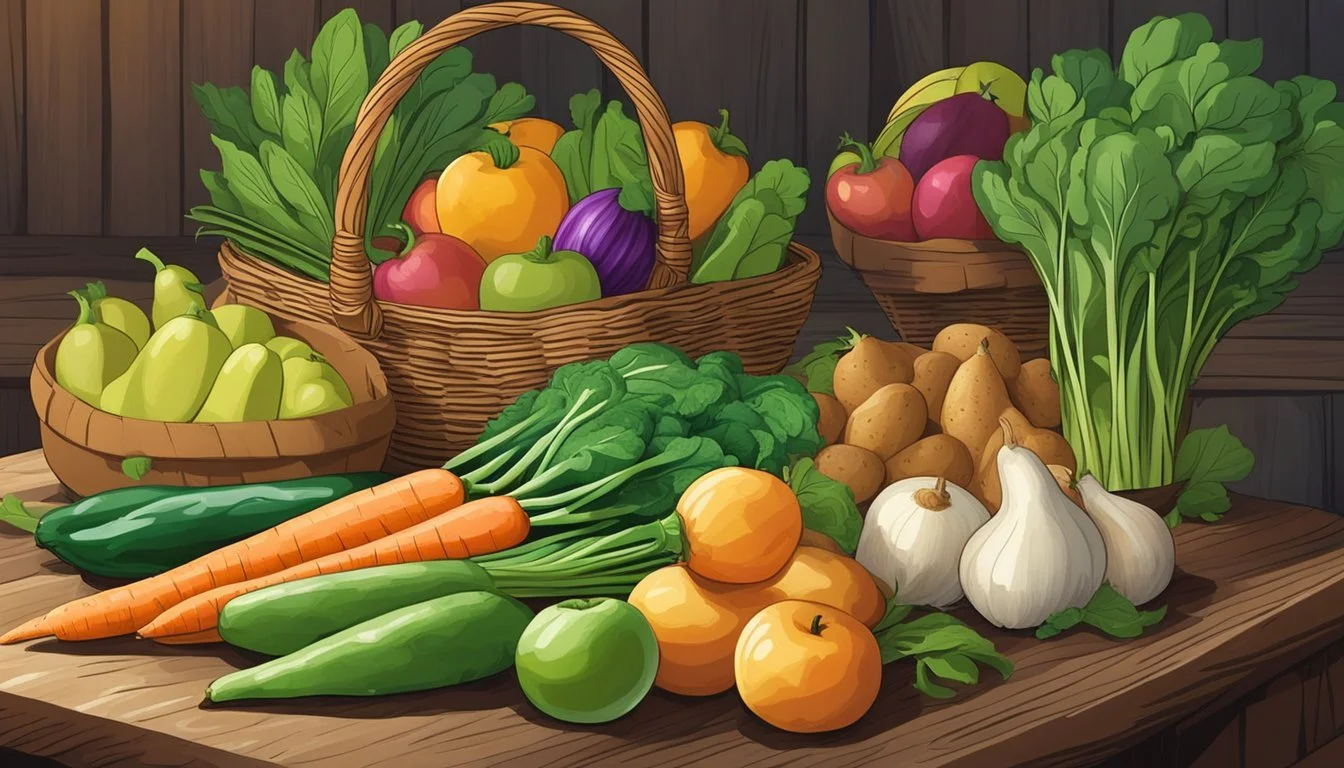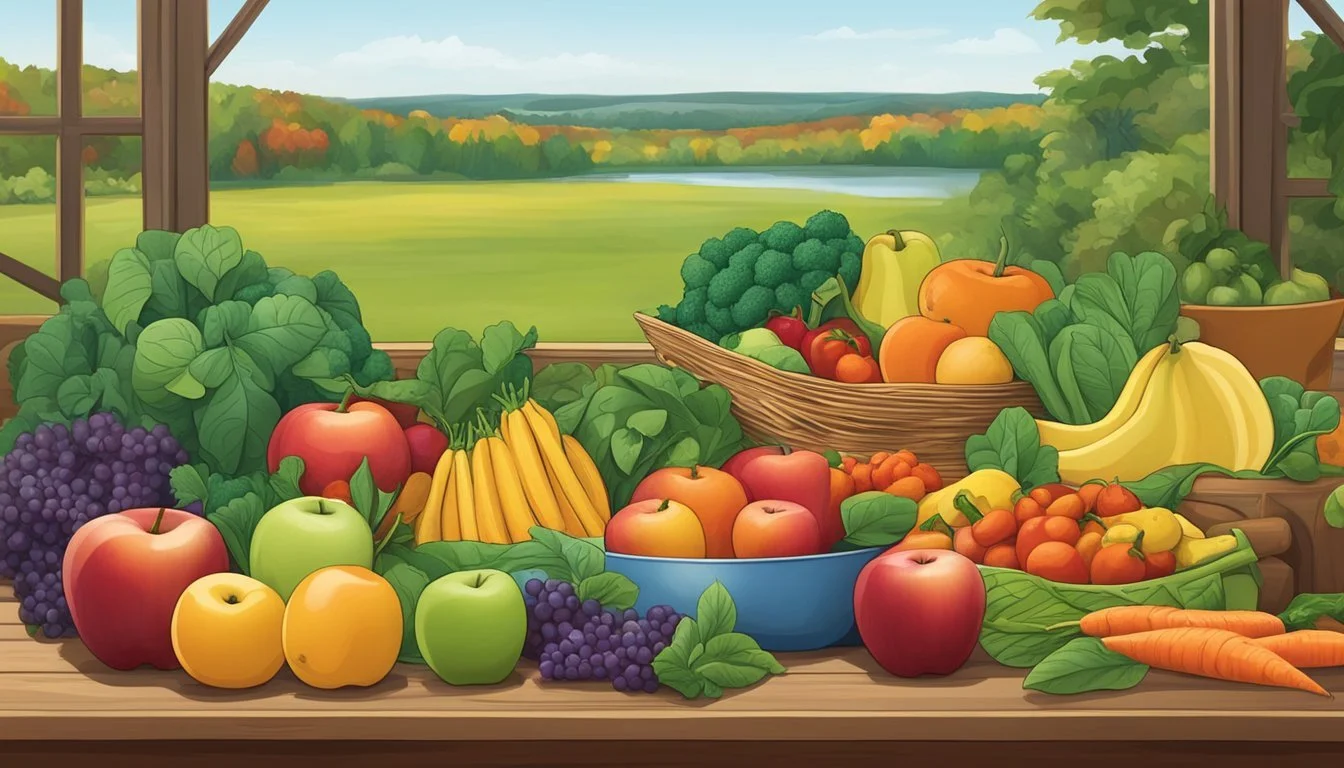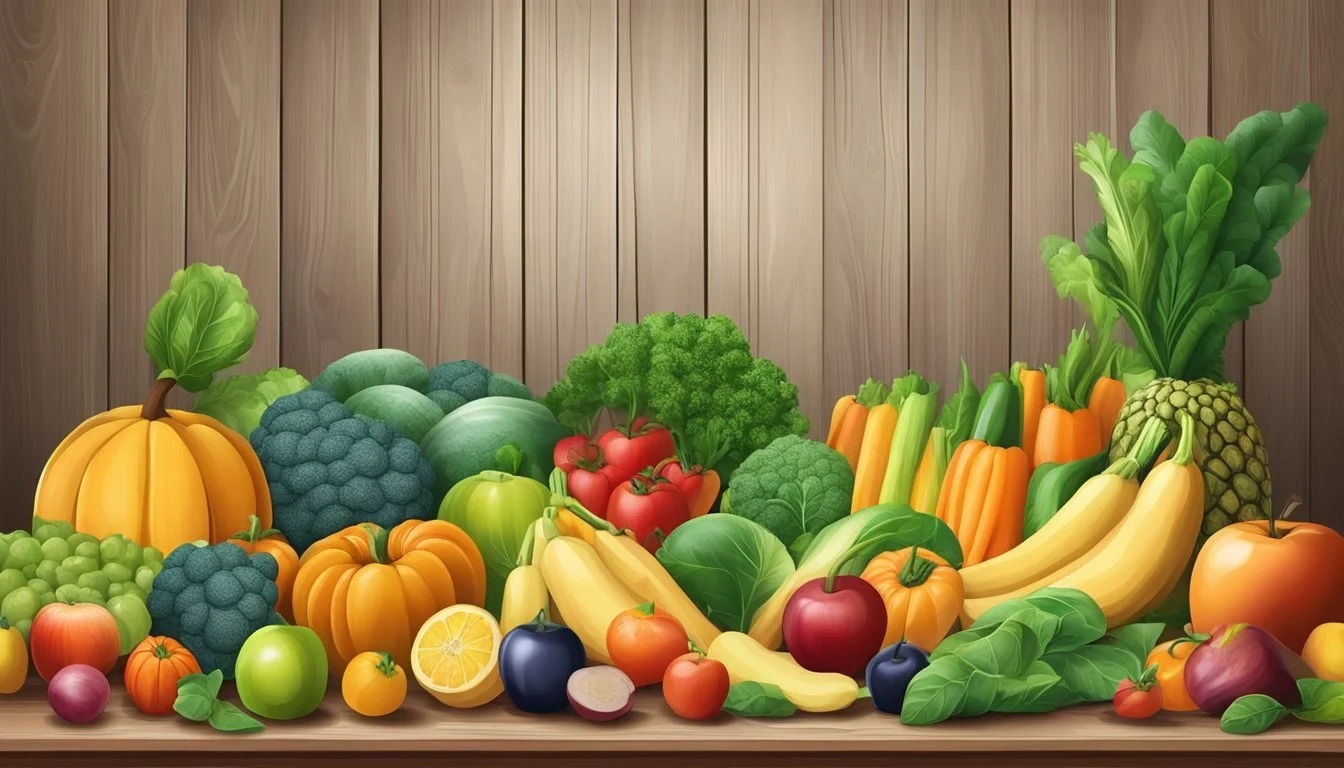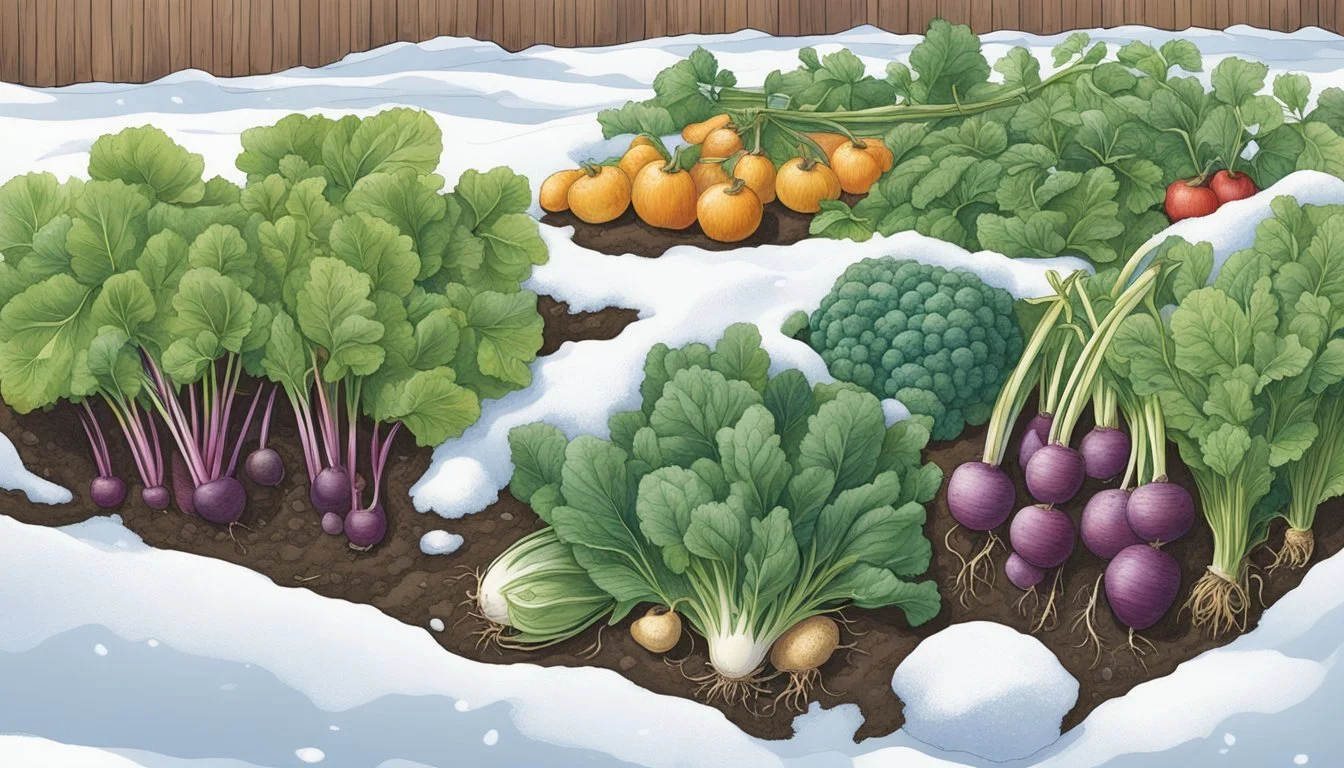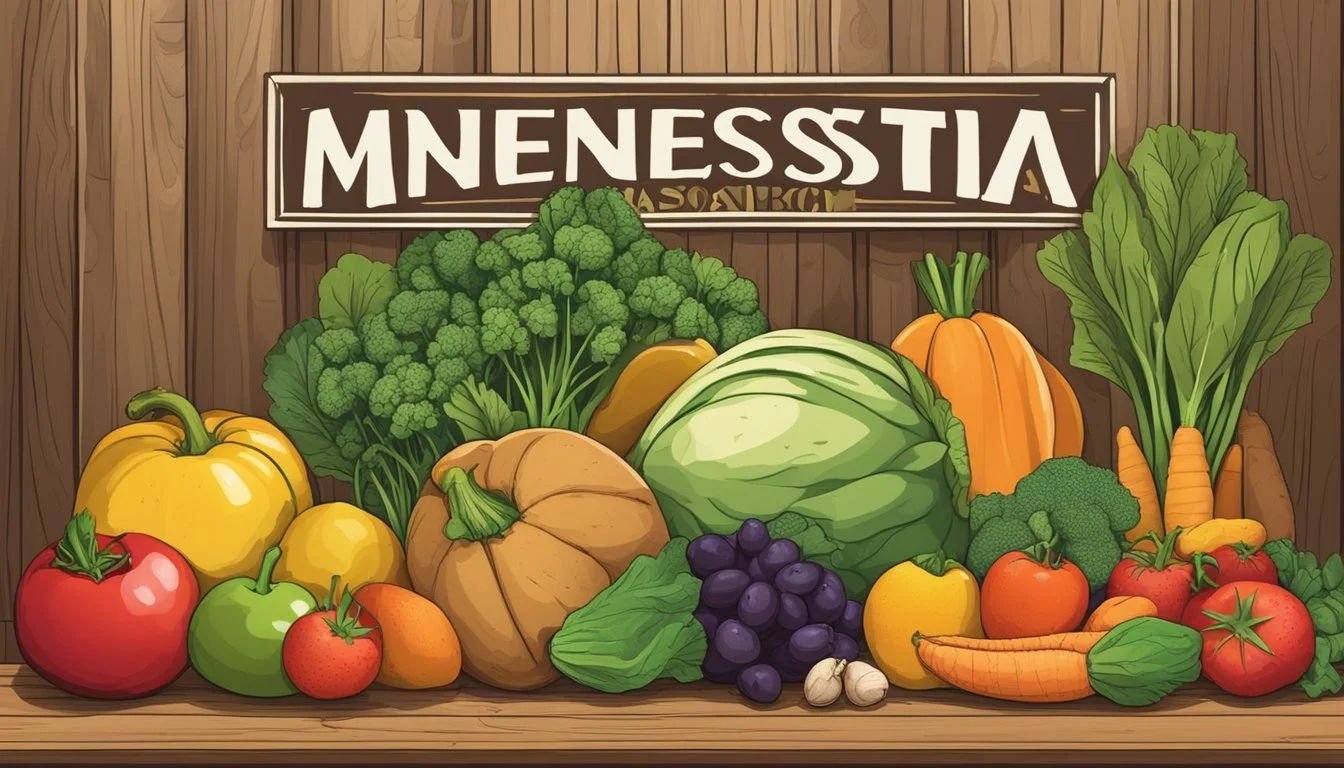Minnesota Seasonal Fruit & Vegetables in March
Your Guide to Local Produce
This Article is Part of our Minnesota Seasonal Fruit & Veg Calendar
March in Minnesota marks the transition from the harsh Midwestern winter to the early whispers of spring. Despite the lingering chill, there is a slow but sure return to agricultural productivity. Gardeners and farmers in the region begin preparations for the upcoming growing season, while consumers start to see the last of the winter storage crops and the first hints of new growth.
With winter extending its grip on the state, the availability of locally grown produce remains limited. Root vegetables like carrots (how long do carrots last?), parsnips, and beets (how long do beets last?), which are able to be stored throughout the colder months, often grace the tables. As March progresses, the earliest of the spring crops start making an appearance, including tender greens and some hardy vegetables that can withstand the cool temperatures.
Indoor growing systems and greenhouses also play an important role in providing Minnesotans with local produce during this time. Such environments can potentially yield items like herbs, microgreens, and lettuces even when outdoor conditions are still not suitable for most crops. As the month progresses and daylight increases, these indoor endeavors become even more productive, offering a prelude to the full bounty of the Minnesota growing seasons to come.
Minnesota Seasonality Basics
In Minnesota, seasonal eating means understanding the local climate and its influence on the agriculture calendar. This approach ensures fresh, flavorful produce that aligns with environmental conditions.
Understanding Seasonality
Seasonality refers to the times of year when various fruits and vegetables are at their peak harvest and flavor. In Minnesota, this cycle is dictated by the state's distinct seasons which affect what farmers plant and when they harvest.
Spring sees the arrival of early greens and cold-hardy vegetables, while summer offers a diverse bounty including berries and tomatoes. As fall approaches, root vegetables and apples thrive before winter sets in, when access to local fresh produce diminishes, and stored or preserved items become more common.
Seasonal Weather Patterns
Minnesota's weather patterns greatly impact the growing seasons. The state experiences four very distinct seasons:
Spring is marked by gradual warming and is often unpredictable.
Summer delivers warm temperatures ideal for a variety of crops.
Fall brings cooler days and is crucial for maturing root vegetables.
Winter is characterized by cold, snowy conditions that limit local production.
These patterns dictate not only what can grow but also influence the quality and availability of the produce.
March in Minnesota
March in Minnesota is the transitional period from winter to spring.
Typical March weather conditions:
Average temperatures: 24°F (-4°C) to 38°F (3°C)
Precipitation increases, signaling the start of spring
During this time, farmers might begin planting cool-season vegetables in heated greenhouses or under protective covers. They prepare for the warmer days ahead when a wider variety of crops will flourish. Consumers may still rely on stored produce such as root vegetables or those that have been preserved, while eagerly awaiting the arrival of fresh spring harvests.
Essentials of Seasonal Produce
In the context of Minnesota's harsh winters, understanding which fruits and vegetables are in season during March is crucial for consumers seeking freshness and flavor. Seasonal produce not only reflects the natural growing cycle, but also ensures peak freshness and nutrient content.
Importance of Eating Seasonally
Eating seasonally is important because it aligns with nature’s harvest calendar, ensuring that produce is consumed when it's at its best both in terms of flavor and nutritional value. In March, Minnesota’s seasonal produce is limited due to the cold climate, but consumers can still enjoy a range of vegetables that thrive in cooler conditions. Root vegetables, such as carrots and beets, are often stored from the fall and continue to be available. Likewise, storage crops like onions and potatoes are staples that maintain their quality. Select winter greenhouses also provide fresh options such as herbs and leafy greens.
Benefits of Fresh Produce
Fresh produce offers a host of benefits. A short transit time from farm to table often means fresh fruits and vegetables retain more vitamins and minerals. In March, Minnesotans can expect greenhouse-grown produce to have a shorter field-to-fork journey. Fresh, crisp textures and full-bodied flavors exclusive to produce like radishes, which can be grown in cooler temperatures, are more pronounced when consumed in their raw state, close to the time of harvest. Availability of these fresh items at farmers markets or through local CSAs supports not just individual health but also the local economy.
Consumers looking for fresh, seasonal produce in Minnesota during March should focus on locally sourced vegetables and embrace the limited yet vibrant selection available during this time.
March Seasonal Vegetables
March in Minnesota marks the transition from winter to spring, providing an opportunity for a variety of cold-tolerant vegetables to thrive. This month's harvest includes an array of vegetables from cruciferous options like cabbage and broccoli to hardy root vegetables such as carrots and beets.
Cruciferous Vegetables
Broccoli: High in vitamins C and K, broccoli is a hardy choice that can withstand the chilly beginning of spring.
Cabbage: A staple in many dishes, cabbage offers flexibility in culinary uses, from raw in salads to cooked in stews.
Cauliflower: Similar to broccoli, cauliflower is versatile in the kitchen and packs nutritional benefits.
Brussels Sprouts (how long do brussels sprouts last?): These small green buds provide a nutritious punch and are excellent roasted or sautéed.
Root Vegetables
Carrots: Enjoyed for their sweetness and crunch, carrots can be consumed fresh or used as a flavor base for soups and stews.
Onions: Onions are foundational for many dishes, providing essential flavorings.
Garlic: A fundamental ingredient in cooking, garlic adds aroma and depth to recipes.
Potatoes: Rich in carbohydrates, potatoes are a filling staple that can be prepared in countless ways.
Radishes: Offering a peppery bite, radishes add a crisp texture and a splash of color to dishes.
Leafy Greens
Spinach: Tender and full of iron, spinach is a versatile leafy green, widely used in salads and cooked dishes.
Kale: (What wine goes well with kale?) Known for its nutrient density, kale can be eaten raw or cooked and stands up well to frost.
Lettuce: A variety of lettuce types are available, each offering a distinct texture and flavor to salads and sandwiches.
Assorted Vegetables
Asparagus (how long does asparagus last?): Signaling the arrival of spring, asparagus brings tenderness and a delicate flavor to the table.
Leeks: With their mild onion-like taste, leeks are excellent in soups and pies.
Celery: Crunchy and refreshing, celery is often used in salads, as a snack, or as a component in cooked dishes.
Peas: Fresh peas are sweet and can be eaten raw or cooked, often found in salads or as a side dish.
Peppers: Although less common in early spring, some peppers might be available in greenhouses.
March Seasonal Fruits
In Minnesota, March marks a period where storage crops are still predominant, due to the lingering cold weather. Among these, apples remain a staple fruit. They are typically stored from the previous autumn's harvest and retain much of their crisp texture and flavor.
Residents often enjoy varieties such as the Honeycrisp, which was developed by the University of Minnesota for colder climates, as well as Haralson and SweeTango. These apples are versatile in use, suitable for fresh eating, baking, and cooking.
Here is a list of apples commonly available in March:
Keepers : Stored from fall, these apples still maintain quality.
Honeycrisp: A balanced sweet-tart flavor with a crisp bite.
Haralson: Tart and firm, excellent for pies and ciders.
SweeTango: A blend of tangy and sweet, perfect for snacking.
Grocery stores and farmers' markets may have these apple varieties clearly labeled, and choosing locally grown produce supports the regional economy and agriculture. While the range of fresh, locally-grown fruits is more limited at this time, apples offer Minnesotans a nutritious and flavorful option that can be enjoyed in various culinary applications.
Preparing Seasonal Produce
When preparing Minnesota’s seasonal produce in March, one can employ a variety of cooking techniques to enhance the natural flavors, or utilize the fresh crisp textures in salads and raw dishes.
Cooking Techniques
Roasting: Hearty vegetables available in March, such as beets and carrots, are prime candidates for roasting, which intensifies their natural sweetness and adds a rich, caramelized flavor. A simple preparation involves tossing them with olive oil, salt, pepper, and perhaps a squeeze of lemon to brighten the dish.
Steaming: For lighter fare, steaming is an excellent method for preserving the color, texture, and nutritional content of greens and tender vegetables like asparagus, which can then be dressed up with citrus-based sauces or a dash of herbs to amplify their freshness.
Salads and Raw Preparations
Salad: Mixing different types of greens such as spinach, kale, and lettuce—each offering a unique texture and taste—creates a vibrant and nutrient-dense salad base. Incorporating thinly sliced radishes adds a peppery crunch, while a homemade dressing with lemon juice can provide a tangy contrast.
Salsa: With the resurgence of root vegetables and the continued availability of stored crops like onions, a rustic salsa or chutney serves as a flavorful guide to combining these ingredients. One could dice the vegetables and combine them with citrus segments or juice for a fresh, zesty condiment that pairs well with a variety of dishes, from grilled meats to a side for a pasta (how long does pasta last?) dish.
Local Markets and Availability
In March, Minnesotans can look forward to sourcing fresh produce from an array of local markets. As the season transitions, crop availability at these community-centric hubs reflects the early stirrings of spring growth.
Farmer's Markets Guide
Throughout Minnesota, farmer's markets serve as a primary venue for local farmers to offer their freshly harvested goods. Despite the cool climate in March, consumers can expect the availability of cold-season crops such as kale, spinach, and root vegetables. These markets typically boast a variety of fresh, locally grown options that pivot with the seasons. Shoppers should check individual market websites or social media channels for specific opening dates and times, as well as available produce.
Metro Area Markets: Open on select dates, may provide greenhouse-grown vegetables.
Rural Area Markets: Opening times vary, often feature storage crops like beets and carrots.
Grocery Selections
Grocery stores in Minnesota also reflect seasonal availability in their produce sections. During March, selections may include both locally sourced items and those brought in from warmer regions to ensure a steady supply. Groceries place emphasis on freshness and variety, with a focus on integrating local products whenever available.
Produce Aisle: Includes a mix of storage crops and early spring harvests.
Local Labels: Look for tags or signs that highlight Minnesota-grown produce.
Seasonal Eating Challenges
(What wine goes well with dried fruits?)In Minnesota during March, consumers face the challenge of finding a variety of local fresh produce due to the cold climate extending the winter harvest time. Strategies like extending the growing season or turning to preserved products become central to maintaining a diet rich in fruits and vegetables.
Extending the Season
Local producers often employ methods to extend the growing season for certain crops, such as utilizing greenhouses and cold frames. These techniques allow for some vegetables to be available beyond their typical outdoor growing periods. For instance:
Greens: While traditionally harvested June through October, with season extension tools, they can sometimes be available in March.
Herbs: Generally available July through October, but with the use of indoor methods, they can also be accessible early in the year.
Alternatives to Fresh Produce
When fresh local produce is scarce, consumers can opt for canned or dried alternatives. These methods of preservation ensure availability and offer variety outside typical harvest times. The following list represents preserved options that may be used when specific fresh Minnesota produce isn't in season:
Canned fruits and vegetables: Can include a broad range of produce like corn, tomatoes, and peaches.
Dried fruits (What wine goes well with dried fruits?) and vegetables: Options such as dried apples, cherries, or mushrooms provide versatility in recipes.
These alternatives are particularly relevant for out-of-season produce and can be integral to a balanced diet when fresh local options are limited.
Recipes and Usage Ideas
March in Minnesota brings a promise of Spring and an opportunity to incorporate a variety of fresh produce into one's cooking repertoire. Here are some specific ways to enjoy the bountiful vegetables and fruits available during this time.
Vegetable Dishes
In March, an abundance of fresh vegetables such as winter squash and carrots make for hearty and nutritious meals.
Salads: Utilizing the tail end of winter squash season, one can create vibrant salads by combining roasted butternut squash with mixed greens, toasted nuts (how long do nuts last?), and a light dressing.
Pasta: A robust pasta dish can feature roasted peppers and sautéed zucchini tossed with al dente noodles, garlic, and olive oil, finished with a sprinkle of parmesan cheese.
Fruit-Inspired Recipes
While fruit options may still be limited in early Spring, they can certainly provide a bright pop of flavor to dishes.
Salsa: A tangy pineapple salsa with chopped cilantro, red onion, and jalapeño pepper can be a refreshing accompaniment to grilled fish or chicken.
Smoothies: Fruit smoothies offer a boost of vitamin C; blend together strawberries with banana and a hint of orange to start the day.
In both vegetable dishes and fruit-inspired recipes, Minnesota's seasonal offerings can inspire culinary creativity and fresh, healthy eating.
Storage and Preservation
When handling seasonal fruits and vegetables in Minnesota during March, one must consider appropriate storage and preservation methods to extend freshness and flavor. Storage conditions vary by produce, but there are general guidelines to ensure optimal preservation.
Cool and dry storage is suitable for:
Onions: Store in well-ventilated mesh bags or containers at temperatures around 50-60°F with 60% relative humidity.
Garlic: Keep in a dry, dark place with moderate humidity to prevent sprouting.
Potatoes: Place in a cool, dark, well-ventilated area; avoid refrigeration, which can affect taste.
For cold and dry storage, consider:
Pumpkins
Winter Squash: Store in a single layer where they can receive ample air circulation, at temperatures between 32-40°F and 65% relative humidity.
Cold and moist conditions benefit the longevity of:
Cabbage
Root Vegetables: Such as carrots and beets, should be kept at temperatures from 32-40°F with high relative humidity of 95%.
Preservation methods like canning and drying enable Minnesotans to enjoy their local produce throughout the year:
Canned: Seal in freshness by canning vegetables and fruits in glass jars, following proper safety guidelines to prevent spoilage.
Dried: Fruits like apples can be dried and stored in airtight containers for extended shelf life.
Remember, each type of produce may have unique requirements, and it is essential to tailor storage and preservation methods accordingly.
Nutritional Information
In Minnesota, March marks the transition from hearty winter produce to the beginnings of spring offerings. The fruits and vegetables commonly available during this time carry a variety of nutrients essential for health.
Root Vegetables: Carrots and parsnips available in this season are rich in dietary fiber and vitamins like vitamin A (for carrots) and vitamin C (for parsnips). They support vision health and immune function, respectively.
Cruciferous Vegetables: Cabbage and Brussels sprouts are prominent during this period. These vegetables are noted for their high vitamin K and vitamin C content, which are important for bone health and antioxidant protection.
Leafy Greens: Spinach and kale, often found in winter months and early spring, provide an excellent source of vitamins A, C, and K, as well as minerals like iron and calcium.
Alliums: Onions and garlic continue to be available and bring not only flavor to dishes but also compounds such as allicin, which is known for its potential beneficial effects on cholesterol levels and blood pressure.
Table 1: Key Nutrients in Seasonal Produce
Produce Key Nutrients Notable Health Benefits Carrots Fiber, Vitamin A, Potassium Vision support, Digestive health Parsnips Fiber, Vitamin C, Folate Immune function, Cell repair Cabbage Vitamin C, Vitamin K, Fiber Antioxidant protection, Bone health Brussels Sprouts Vitamin C, Vitamin K, Fiber Antioxidant protection, Bone health Spinach Iron, Calcium, Vitamins A/C/K Blood health, Bone strength, Vision support Kale Vitamins A/C/K, Calcium, Antioxidants Immune support, Vision, Anti-inflammatory Onions Vitamin C, Quercetin, Allicin Heart health, Anti-inflammatory Garlic Allicin, Vitamin C, Manganese Cholesterol management, Immune support
These seasonal offerings not only add a fresh, flavorful component to meals but also contribute to a well-balanced diet that supports overall health.




